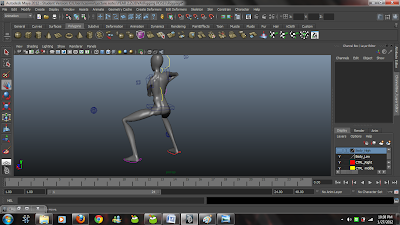Character Design
As
part of our assignment as well, we had to create an original character,
drawing some facial features and creating a back story for our
character. The most interesting is to create the type of character he
is. Is he calm and cool? Overconfident and cocky? Highly sarcastic and
proud?
In the end, I chose evil and crazy. You will see what I'm talking about. Here are my character references.
This is zancrow from the anime: Fairy tail. Look at how scary looking he is.
This is another one from fairy tail; Gajeel.
This is Zaraki Kenpachi from the anime: Bleach. There are many
characters in the anime but he is the only one with an evil smile all
the time. He is actually good but looks evil.
This one is Alucard from the anime: Hellsing Ultimate. He is the most
powerful protagonist ever and he is evil but also good in nature.
So these are my character references.
Head design Sketches
Here are some initial and face sketches of my character
I'm
not really good at drawing HUMAN proportions without an image to refer
to. I specifically do not like the last image (the one right above)
because from other images, I can draw perspective images of my
characterer instead of side and front ones.
I
made 1 error when drawing the front and side views. I drew the lines
first to roughly pinpoint where the eyes, nose, mouth and chin were. And
it turned out horrible. So I drew the front view first, then moved on
to drawing the lines and the side view.
Next week, I will probably do the poses for him and the character background for him.
I already thought of a name: Malkrath!
Body design
Here are some referenced poses from the 4 characters.
See how the 2 poses above look very identical, indicating a very overconfident, powerful character.
The last two above were my inspiration for my character. The 2 poses are from Ryu Hayabusa from Ninja Gaiden 2.
Body design Sketches
Now are my sketches of the body poses.
I am still not good at drawing my human characters so I use reference. Some I come up on my own.
Since pictures do not describe much of my character, here are some insight as to the background of my character.
Characterization
1. Fill in these basic details:
NAME, TAGLINE, and a BRIEF
INTRODUCTION to your character.
Malkrath.
“I’m looking for a real fight! Not
from some dog shit.”
Malkrath is part of a group whom they
named themselves: Immortell. He is 1 of the 10 core group members who desires
battles and blood. When he was young, he witnessed his parent’s death infront
of him. The person who founded the group took Malkrath under his care and
trained him under his guidance. With self training as well, he has become a
force to reckon with and he believes that nobody in the world is superior to
him. He has faced many challenges; assassin’s sent by the one responsible for
his parent’s death and has overcome them all in blood.
2. All characters are created for a purpose.
This purpose is to tell a story. Briefly describe the story that your character
takes part in. You don’t need to go into great detail.
A young man has made a
name for himself in the world of magic. He has witnessed his parent’s death at
a young age and has taken it up upon himself to surpass his weak self and turn
himself into the most powerful magic sword wielder in the world. Initiating
into a group called “Immortell”, under the person he looked after him when his
parent’s were killed; he strove hard and sparred everyday to become the best.
He has killed many to get to where he is and will continue to do so to find out
his parent’s murderer. His name: Malkrath.
3. What is the driving force of your character
– what motivates them? This gives a key to their character. Darth Vader is
motivated by his desire to crush the Rebel Alliance, while Jack Bauer is
motivated to protect his country from whatever dangers threaten it.
Malkrath is driven by his blood lust
and seeks only to fight the strongest of the strongest. And deep down in his
heart, he also wants to find his parent’s murderer.
4. What traits are unique to your character –
in other words, what makes them different, and stand out from, all other
characters that have ever been created? Give at least 3 appearance-based
trailts, and 3 behavioural traits. For
Appearance:
1) Malkrath’s most noticeable
feature is his evil grin that never goes away.
2) Another feature is his scar
on his face that crosses his left eye.
Behaviour:
1) Malkrath is always ready
and willing to get involved in any fight so he jumps in relentlessly and let
his body and reflexes take care of the rest.
2) He walks with
overconfidence and zealousness. He believes to be one of the most powerful magic
/ equip users ever and in actual fact, he is.
3) He serves no one, other
than the man who saved him when he was a young boy. He looks down on a lot of
people but treats his group with respect they deserves for they are as powerful
as he is.
5. Write a short dialogue sequence between your
character and another person. The dialogue should illuminate some part of your
character’s personality.
(Malkrath walks along a road
and is ambushed by another magic group, “Cyrans”)
Cyran
Leader: “We have to kill you, Malkrath! Under our master’s orders!”
(20
people charge in and fighting ensues)
(5
minutes later)
Cyran
Leader: “*panting* How is it possible? You have not a scratch.”
Malkrath:
“Is that all? Is that all your pathetic group’s got? Your “ambush” attack was
merely a warmup!”
(Malkrath
takes his sword and stabs him mercilessly)





























































